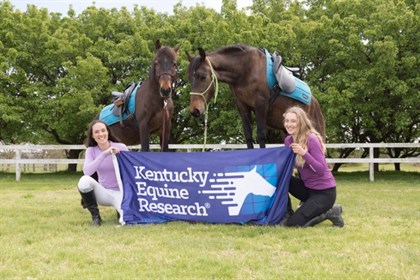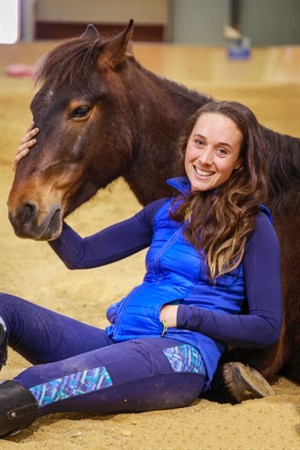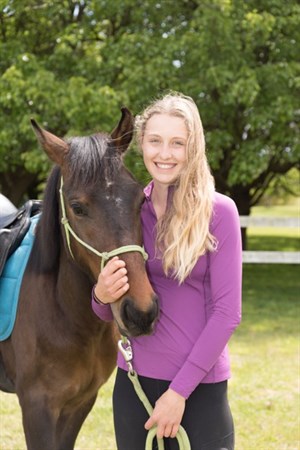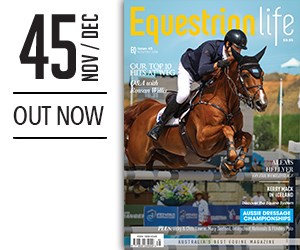
Lara & Amber - countdown to the Australian Brumby Challenge at EQUITANA Melbourne.
© PlanBphoto
Countdown to 2018 EQUITANA Melbourne
The concept of Sensitise vs Desenstise is about educating a horse to respond to pressure while ensuring the horse does not fear that pressure.
In my previous blogs, I have talked about balancing Cooper, physically – literally - to keep him upright. In this blog, I want to discuss how I have also worked to balance Cooper, emotionally.
My definition of sensitising a wild horse (Cooper) is about teaching him how to respond correctly to a soft pressure (cue). Whereas the act of desenstising will result in Cooper learning that certain pressures are not a cue.
“An emotionally balanced horse is a safe horse.
The only way to safety with horses is through education.”
The day that Cooper arrived as a 12 year old wild brumby, he was hypersensitive to me and his new environment. If I so much as moved my eyes quickly, it was almost as though I had superhero powers that could lift Cooper into action or cause him to jump sideways into a wall. I even remember as I stood in his yard taking in a deep breath out; Cooper ran, slipped and tipped over backwards. I knew I would need to keep my training programme balanced in order that Cooper would become a well-rounded horse in readiness for EQUITANA, and in his life after the competition.
Lara and her brumby Cooper.
© PlanBphoto
Over many years of starting young horses, especially Arabians, I have learnt that no matter how hypersensitive a horse is – we always start our training by sensitising the cues, which enable me to move my horses feet. Leadership in horses is decided by who can move whose feet. Once the horse has gained trust in me as the leader ONLY then do I begin to desensitise other pressures; such as touch, noise, and movement to name just a few.
I always start our training with sensitise for two reasons:
- When a horse is sensitive I need less pressure in order to educate a cue, and
- I rely on these series of cues when desenstising OR if the horse becomes reactive to me and/or his environment.
In preparation for EQUITANA and the Australian Brumby Challenge, the last couple of weeks have been about exposing Cooper to a range of environments. Exposure alone will not produce the desired results intended for EQUITANA. Instead, exposure for me is about testing my cues with Cooper in a range of environments: Beach, dressage clinics, pony club, mountain trail training.
When Amber and I unload Cooper and Wranger on the first day of EQUITANA, I know that both horses will be balanced in their education – cool, calm and attentive. Cooper will be sensitive enough to perform at a high level and de-sensitised enough to not overreact when my cape drapes down around his heels in our Freestyle event.
Amber and her brumby Wrangler.
© PlanBphoto
EQUITANA is a high energy environment, especially for our two wild Koscy Brumbies. It is not possible to desensitize a horse to everything it may encounter throughout a lifetime. My training approach is all about teaching our horses to understand a set of cues. For Amber and I using The System, in the lead-up to this year’s Challenge, we know they can trust in our decisions to keep them safe no matter what the environment. ?
Lara Beth Poynton
For further updates go to: Brumbydiaries/Lara Beth
2018 Naming Rights Partner, McDowells Herbal Australian Brumby Challenge
EQUITANA Melbourne, 15 to 18 November
READ THE LATEST NEWS ARTICLES HERE
https://www.equestrianlife.com.au/articles/BLOG-The-Art-of-Sensitise-Desensitise



